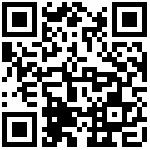 12 Nov
12 NovHow Does Bitcoin Mining Work
Blockchain is a decentralized peer-to-peer network that has been hailed as highly secure and transparent, hence trustworthy. This is because records in the blockchain network are secured using timestamps and cryptographic hash functions in such a way that after being added to the ledger, it is almost impossible and impractical to alter the transactions. At the core of blockchain security is the absence of centralized control.
Here is a breakdown of what happens during bitcoin mining
The Mining Requirements
A bitcoin miner will first select their tools of the trade and set them up. These include:
- Hardware GPU (graphics processing unit), SSD for crypto mining, or ASIC (application-specific integrated circuit)
- Mining software
- A wallet
- Preferred mining pool (if one chooses pool mining option instead of solo mining)
Once all these are set up and the system fired up, it performs the mining process autonomously. Any other human involvement comes in the event of system or network failure, power outage, or regular system maintenance.
Elements of a Bitcoin Transaction
When a transaction is initiated in the bitcoin network, three elements are involved:
- A transaction input
- A transaction output
- The transaction amount
For every transaction input, a bitcoin mining software generates a unique cryptographic hash puzzle that is difficult to decode. The software then groups the number of transactions required to form a block into a Merkle tree.
The Merkle Tree and the SHA-256 Algorithm
A Merkle tree is a data structure of the hashes in a block and acts as a summary of all the transactions in the block. In the Merkle tree, hashes of individual transactions known as transaction IDs are paired repeatedly using the SHA-256 algorithm until only one hash identifies the entire tree. This hash is known as the Merkle root or root hash.
The Merkle tree enables the efficient verification of transactions in the bitcoin network.
The Block Header
The Merkle root, the identifier of a Merkle tree, is stored in the block header. The block header contains information about the block and includes the following components:
- The version number of the bitcoin software
- The hash of the previous block
- The Merkle root (root hash)
- Timestamp
- Cryptographic nonce
- The target
This is the information miners will use to solve the hash puzzle and add a block transaction.
Solving the Hash Puzzle
Miners must solve the hash puzzle by finding the hash below a given target through the difficulty requirement. The target, stored in the header, is expressed as a 67-digit number that will determine the mining difficulty based on the number of miners competing to solve a hash function. It is important to note that this difficulty adjusts after every 2016 blocks are created depending on how much time it took miners in the previous 2016 blocks to solve an equation. This also helps to maintain the rate at which transactions are appended in the blockchain at 10 minutes.
To solve the hash puzzle, miners will try to calculate the hash of a block by adding a nonce to the block header repeatedly until the hash value yielded is less than the target. Once a mining computer solves the puzzle, a new block is successfully created that is validated in the Bitcoin network after a consensus between the nodes has been reached. When a block is validated, the transactions bundled in it are verified and the block is added to the chain. As indicated above, this happens every 10 minutes.
As there will be many miners (systems) competing to solve the puzzle, the first miner to get the correct hash value earns a reward in Bitcoin. This process allows more Bitcoins in circulation.







